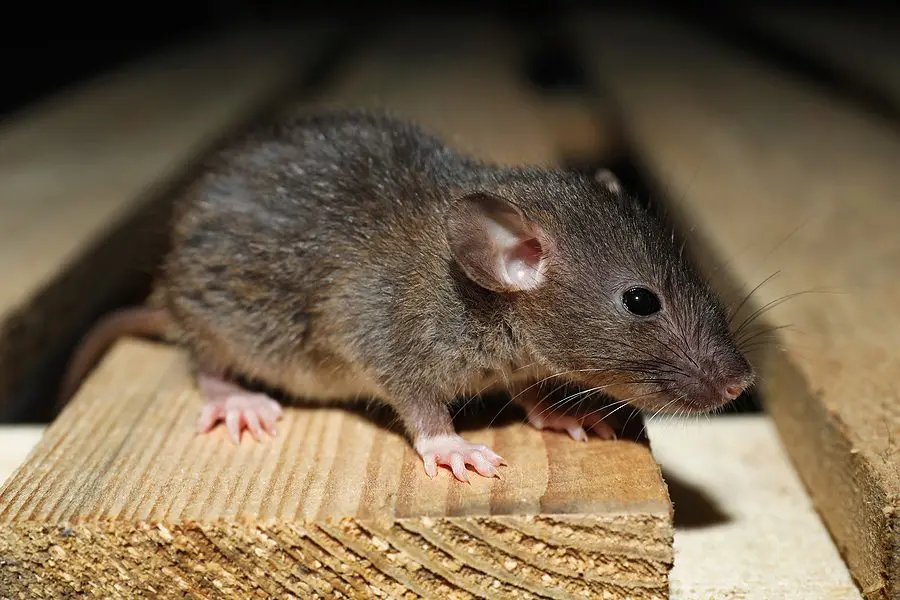Top Indicators You Have Mice this Winter

Many people in the Southwest in places like Santa Fe, NM, will mistakenly believe that the onset of winter will miraculously end all the insect issues that have plagued their homes and places of business. This is because winter temperatures are often lower than summer temperatures. Even though this is correct for some populations of pests, it is unfortunately only the case for some problems. In the winter, when temperatures plummet, and there is an increase in snowfall and freezing rain, rodents like mice may become more active. This is because their habitats become more favorable. Therefore, in the winter, you need to be aware of the possible symptoms that mice are there.
The winter months are the most active time for rodents. Mice and rats trying to survive the winter may dig and scurry their way inside residential and commercial buildings in the hope of finding someplace warm to stay. If you are not careful, a few rats may soon convert your property into a busy nesting ground, disrupting your life and possibly even leading to severe damage to your home’s electrical and structural systems. The following explains the most prominent signs that indicate the presence of mice throughout the winter season. It would help if you kept a sharp lookout for these things to prevent any harm to your property.
SCRATCH MARKS, EVEN TINY ONES
The soles of rodents’ feet are not fleshy and cushioned like ours. Instead, their limbs wear down surfaces over time, leaving behind noticeable scratch scars on hard flooring or wall molding. So be sure to inspect these places, especially those that don’t often get a lot of foot activity. This is true for the furnishings as well. Examine each of the wooden legs and the fabric backs of each piece of furniture for any indication that anything may have been scratching or wearing them down. Remember that any table portion will exhibit signs of wear and tear after some time. Nevertheless, these patterns will become apparent when rats scratch and gnaw with their paws and teeth and should be immediately recognizable from regular wear. Keep an eye out for chew and scratch marks that a rat or mouse might have made.
Holes, particularly in places where they have no business being
In the light-hearted cartoon, everyone is familiar with the stereotypical mousehole that Jerry deftly exploits to sidestep Tom. Although the truth is more complex and complex than shown, there are parallels to be drawn between the two. Rodents will search for places to dig through your walls to establish a haven from which they may investigate the home and construct nests. Be on the lookout for holes where there shouldn’t be any. They are how rodents gain access to your house. It is possible for these apertures to be relatively small because it is well-known that rats can fit through spaces that are much smaller than their bodies. Therefore, check the baseboards in your home regularly for locations where they have worn away. Try patching or closing them to prevent rats from using these holes as an easy access point.
SMELLS, NOT THE GOOD KIND
All living things leave some evidence that demonstrates their presence in each location. Rodents are no different. It’s possible that the average rodent or rat droppings you come across don’t give off a unique stench that’s potent enough to get your attention. However, regions that rats frequently visit will often give off a rich fragrance like urine. It may not always be pleasant, but it is essential to pay close attention to strange scents of any type, especially urine from rats and mice since this might be an early warning sign that rodents are seeking refuge in your home over the winter. In addition, this is an indication that you require assistance with rodent eradication.
DISTURBANCES, MOST OFTEN DURING THE NIGHT
It’s true that rodents are (typically) relatively little and may go unnoticed for extended periods, but everything produces some noise. The nighttime is when rats carry out most of their daily activities. They are nocturnal by nature, which allows them to take advantage of the time while you are sleeping. Before you turn in for the night, you should try to scan the area for any sounds that resemble rumbling, scampering, or high-pitched squeaking. In addition to that, give your walls the particular attention they need. Rats navigate their way around your home by crawling down the inside of the walls, which may seem unusual for them to accomplish. If you hear noises coming from them and you know it’s not just a leaky pipe, there’s a fair chance that a rat or another tiny animal is sitting in them.
ALTERATIONS IN THE BEHAVIOR OF PETS
Humans don’t typically pay attention to the subtle shifts that occur with time. You could see something moving in the periphery of your vision and dismiss it as a simple optical illusion caused by the light or a stray dust particle. You are likely to avoid leaping to the conclusion that there is a problem with rodents in the area. Considering this information, it is a relief to know that our animals are not the same. Both dogs and cats are quick to alert their owners if they discover something that should not be in the house. In addition, they are an excellent barometer for evaluating the activity level of rodents because of this.
Pets notice rats within your home.
Don’t write off your cat or dog just because you see them chasing something or barking behind the couch or under the refrigerator. Instead, could you pay attention to what they’re doing? It’s possible that they just came across an abandoned toy or a crumb of food, but it’s also possible that they’re attempting to bring your attention to a sneaky little trespasser. As an added advantage, cats frequently display their skills to provide you with firsthand evidence of rodent activity. Be sure to give them a treat and carry gloves to help clean up the mess.
